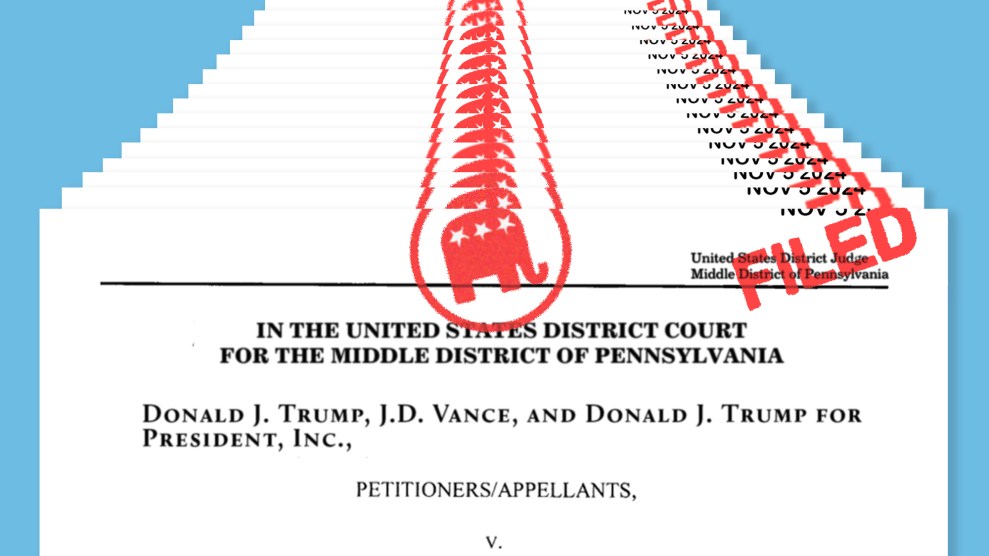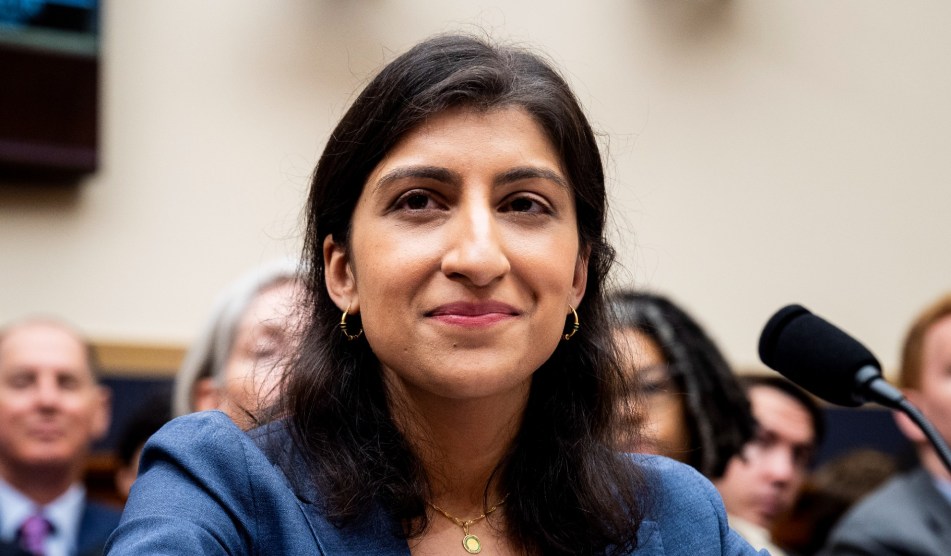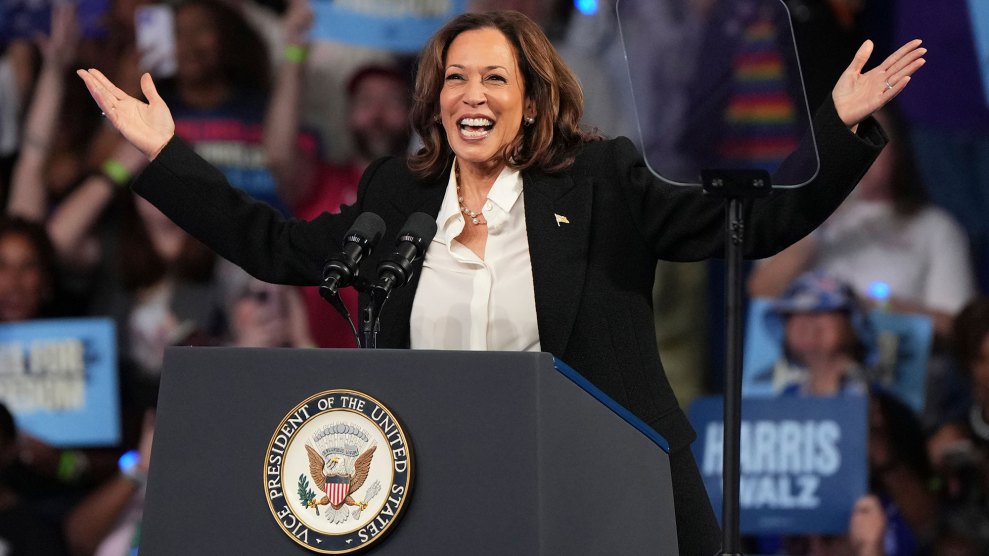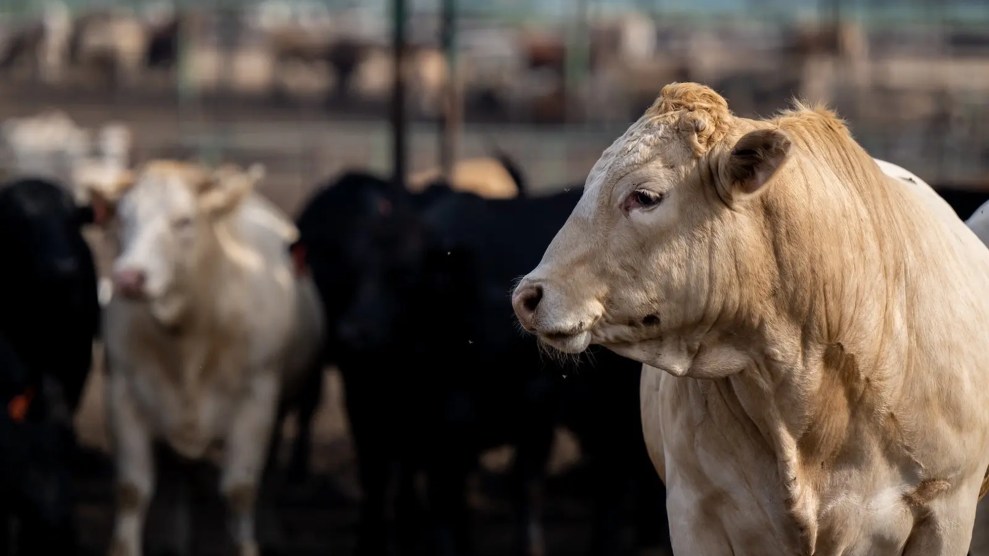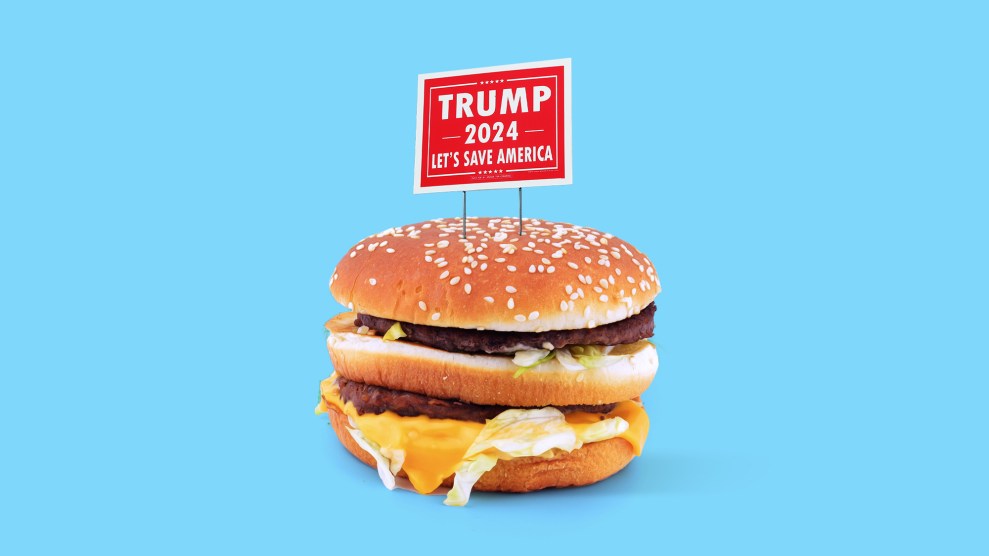
Mother Jones illustration; Paul Weaver/SOPA/Getty; Getty
Across the country, you can find small town diners and watering holes proudly displaying photos of a president stopping by on the campaign trail. It’s not only a memento of how the person who got the nuclear codes may have ordered a burger or a slice of rhubarb pie—it’s a reminder of how voters have looked to national candidates’ food and beverage choices as one way to understand if inherently elite politicians are salt of the earth.
In forming her public image, Harris has showcased prowess in the kitchen.
This year, campaign season served up a buffet of food-related happenings and candidate signals, that sometimes, explains University of Buffalo political scientist Jacob Neiheisel, reveal politically salient “boundary markers between groups” and “status anxieties.”
One food gaffe that stands out in history came during incumbent Gerald Ford’s 1976 campaign, when he bit into a tamale in Texas, husk and all, and nearly choked. Such missteps are consequential, Neiheisel says, because it’s “seen as some kind of indicator that they’re out of touch with the electors, that they don’t know the people who they would be representing.”
This year, the closest we’ve come was JD Vance’s stop at Holt’s Sweet Shop, a Florida doughnut seller. His inability to engage the counter staff while standing draped in a suit and a seeming expectation that he’d be recognized—along with his order of “whatever makes sense”—brought national derision. As one succinct YouTube commenter put it, they had “never seen a VP candidate act with less charisma.”
Mountain Dew, also largely thanks to JD Vance, became a token of a certain kind of white manhood, after he, in attempting a jab against overreaching “woke” politics, spoke about drinking a Diet Mountain Dew and how Democrats were for some reason “going to call that racist.” A week later, Democrat vice-presidential nominee Tim Walz proved him wrong by reaffirming his historic love for Diet Dew, telling a voter online that drinking one was the best way to start a morning. In October, the Harris campaign published a video of a blaze orange-bedecked Walz hunting and holding a shotgun, saying he’s looking to “grab a Diet Dew” and “pound one down.” As that guns-and-ammo display suggests, “Diet Mountain Dew has something to say about masculinity,” Emily Contois, a University of Tulsa professor of media studies, says, “but also about regionality,” referencing the drink’s “hillbilly”-tied branding and popularity across a so-called “Mountain Dew Belt” spanning parts of Appalachia and rural, middle America.
Despite Walz’s language calling to mind frat basement chugging, the Minnesota governor brings nearly 30 years of sobriety to the ticket. But when Kamala Harris went on Stephen Colbert’s show, the late night host brought up what he called one of the “old saws” of political likability: would I grab a beer with the candidate? (To play along, she was served a can of Miller High Life.)
But when it comes to playing politics with eating and drinking, Harris has largely been focused on letting voters know she likes to cook. That’s no surprise, according to Contois, who has written that female candidates, in walking “an impossible line” of identity politics, often “navigate voter perceptions of both gender and electability through food and cooking.”
“You have to be masculine enough that they believe you can do the job,” Contois says. “You have to be feminine enough that they think you’re a real woman and a believable one.”
Trump’s campaign bought McDonald’s more than 150 times—there’s no record Harris’ has once.
When Hillary Clinton ran for president, it was against the backdrop of the cultural controversy kicked off by her comments, amid her national introduction during her husband’s 1992 presidential campaign, about how she had prioritized a legal career over staying at home and baking cookies. While men seeking the highest office sometimes seem to relish stuffing their faces on camera, in her 2016 campaign Clinton told the press—during an appearance where she was offered but refused cheesecake—that she had long ago “learned early on not to eat in front of all of you.”
“When it comes to women and food and eating and dieting and bodies,” Contois says, “it becomes a tangled thing.”
In forming her public image, Harris has repeatedly showcased interest and prowess in the kitchen. In her 2020 Democratic presidential primary campaign, she ran a video series called “Cooking with Kamala” where she cheffed it up with celebrities, comedians, and politicians. In her speech accepting the party’s vice presidential nomination that year, Contois has written about how, by mentioning cooking Sunday dinner for her family to bolster claim to the nickname of Mamala, Harris sought to “cast herself as politically competent and suitably feminine in the eyes of voters… while also foregrounding her role as a mother and nurturer.”
Contois believes the quirky recipe details shared by Harris on the campaign trail—such as soaking greens in the bathtub—indicates genuineness and true passion, but also a savvy strategy. “It’s coming across as both truth, and a tactic that can help to construct that believably feminine side that people would expect and want to see in a woman,” Contois said.
Harris’ cooking references have become a tool of attack. As Laura Loomer, the right-wing influencer who has spent time on the campaign trail alongside Trump, posted in September, “Kamala spends more time making cooking videos than she does speaking to the media.” Loomer also, in a tradition that traces at least as far back as stigmatizing Italian migrants’ use of garlic, made a smear out of Harris’ Indian heritage and cooking by posting she would make “the White House smell like curry.”
“The spice and the smell and the difference,” Contois says, “that’s a more than 100-year-old tactic … of how to other someone.” An extreme version was also used to target Haitian migrants by the Trump and Vance ticket, in their comments pushing the false notion the community was eating pet dogs and cats. “To eat the family pet—it’s this huge anthropological, cultural taboo,” Contois said. “That’s why the rumor could take root and do so much harm.”
Donald Trump found his own way to use a kitchen to reshape his public image in the campaign’s closing weeks, by making his stage-managed appearance behind a fryer and drive-thru window at a Pennsylvania McDonald’s. It was not only a reminder of his love for the company and fast food generally, but a salvo in his one-sided narrative battle about Harris’ actual experience working at a McDonald’s—one that contrasts with his own silver spoon-fed upbringing.
Harris’ cooking references have become a tool of attack.
Federal Elections Commission campaign spending data shows another clear Trump-Harris contrast related to McDonald’s. While his campaign has paid for food from the home of the Big Mac more than 150 times, there’s no record Harris’ has ordered even once. His team’s second most frequented food business is Dunkin’ Donuts, closely followed by Chick-fil-A, where he has spent over 10 times as much money as Harris. The Harris campaign, since it launched in July, has tended to go big on fast casual spots like Chipotle, where her campaign spent 15 times more than Trump’s, and Sweetgreen, where they spent three times as much as Trump.
Of course, to look beyond symbolism and such spending, the candidates have pushed policies that could affect what and how Americans eat. While Trump loves to blast the rise in cost of groceries, his plan to deport masses of immigrants has been predicted to cause an over 20 percent increase in the price of hand-picked crops while nearly doubling the price of milk. With those kind of stakes, it’s clear this year’s election has left voters with plenty to digest.

